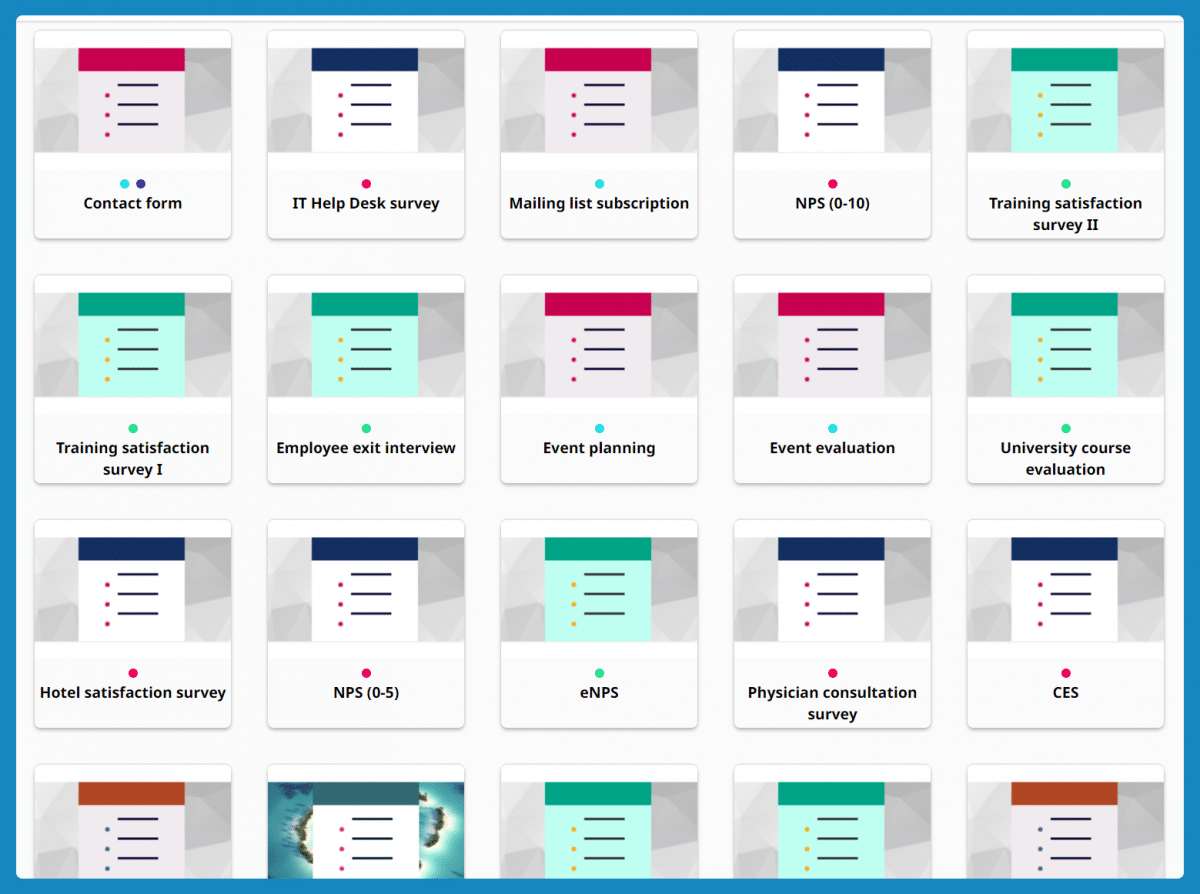Crack the code to customer happiness with our down-to-earth guide on voice of the customer (VoC)!
We’ve provided simple yet mighty steps to turn feedback into action, keep your clients thrilled, and shoot your business to the stars.
But first, let’s start with the basics.
What is voice of the customer?
Voice of the customer (VOC) is collecting info about what customers expect and need. It uses VOC data to understand these customer insights and helps businesses better satisfy customer needs.

The benefits of voice of the customer
Voice of the Customer (VoC) brings big wins for businesses and customers. It makes feedback actionable, and makes things better for both sides.
Here are five ways VoC does just that:
#1 Voice of the customer improves customer satisfaction
When an online shop listens to what customers say, they get valuable VOC data.
This info helps them understand what buyers like and don’t like. When acting on their feedback, the shop can make changes that people want.
For example, if customers find the checkout process too long, the shop can simplify it. This direct action shows customers the shop cares and works to improve customer satisfaction.
Simple as that, happy customers mean a successful business.
📚 Read : Customer Satisfaction Survey Software: How to Choose It?
#2 Customer feedback shapes better products
Companies make products that people truly need and want, and customers get solutions that make their lives easier. How?
Customer feedback is a guide for creating better products. Clients share their complaints or talk about their challenges, and they highlight what doesn’t work for them. Take advantage from the feedback. It points out customer pain points directly.
For businesses, this means a clear path to make products that really help and delight.
For customers, it means products evolve to tackle their specific challenges, leading to customer success.
📚 Read : 6 great customer feedback examples.
#3 Meeting customer expectations boost loyalty
Meeting customer expectations makes people stick around longer. Businesses offering exceptional customer service, show they care.
They collect data and paying attention to real-time customer feedback. They see what people really want, so they are able to spot trends in customer behavior.
Knowing these trends means businesses can adjust quickly, always keeping up with what customers expect.
For customers, this feels great. They see a company that listens and adapts to their needs, so they want to stay with them.
For businesses, it means loyal customers who keep coming back. It’s all about making sure every experience hits the mark, so everyone wins.
#4 Voice of the customer identifies service gaps
Voice of the customer lets businesses see where they’re not doing so well.
Companies analyze customer opinions, so they can find out what makes customers unhappy. Businesses then identify customer pain points that might not be obvious at first.
Maybe customer service representatives are not as helpful as they should be, or perhaps the website is hard to navigate? Addressing this feedback means companies can fix these issues, and make the whole experience better for everyone.
Customers get what they prefer, like quicker help or an easier website to use.
Businesses benefit, too, because happy customers mean more people keep coming back.
#5 Voice of the customer drives business growth
A well-run voice of the customer program fuels business.
It happens because the program helps companies understand what customers think and want. When businesses know this, they can make better decisions about everything from product design to customer service.
They know what leads to happier customers who are more likely to stay, spend more, and recommend the business to others. The business aligns closely with customer needs and expectations, building a loyal customer base and attracting new ones.

Why VoC matters in surveys
VoC matters in surveys because they offer a direct way to hear what customers think.
With customer feedback surveys, companies get both direct and indirect feedback. They can understand not just what customers say they like or dislike, but also why.
Analyzing customer feedback from these surveys gives clear clues on how to make things better. Collecting customer feedback this way ensures businesses focus on what customers really need. It may lead to smarter decisions and happier customers.
How to tackle VoC in your business?
Not sure how to start? Follow our step-by-step instructions.
Step 1: Define your VoC objectives
You need to figure out what you want to achieve with your choice of the customer program.
Ask what you need to know about your customer experience. Is it to improve product quality, enhance service, or increase customer satisfaction?
Set clear goals like these so you know what to focus on. Defining your VoC objectives helps you create a customer program that targets the right areas. Then, you can invest time and resources in what matters for business.
📚 Read: How to Create Good Customer Satisfaction Survey.
Step 2: Collect customer feedback through multiple channels
It is tracking the entire customer journey, from browsing online to buying and using the product. You can use popular tools such as Canny for this, but Canny alternatives tend to do a better job at a lower cost.
Use surveys, social media, emails (you can easily embed SurveyLab’s surveys there), and talk to customer service representatives to hear what customers say.
Each channel gives unique insights. For example, social media might show what customers love or hate publicly, while customer service representatives share detailed stories from direct conversations.
Step 3: Analyze the feedback for actionable insights
Look at t what the feedback tells you about customer behaviors and experiences. You use tools like SurveyLab to analyze the survey answers. With SurveyLab, you can see graphical reports that show the big picture of your customers’ data.
To start, you hit the REPORT button, and it gives you a summary. You can also see each customer’s answers in detail if you need to.
SurveyLab lets you export the data in formats like Excel or PDF, so you can work with it more deeply outside the tool. And if you need to focus on specific details, like feedback from a particular group, you can add filters to your reports.
This helps you understand patterns or trends in the feedback, and makes it easier to decide what actions to take next to, meeting customer expectations.
📚 Read : 10 tricks to help you build better surveys.
Step 4: Implement changes based on customer insights
Use what you learned from customer data and feedback to make your business better – take some actions. Maybe you need to fix something about your product or change how you talk to customers. You do this to make the customer experience better.
And as existing customers see you making the changes they suggested, they feel valued and that you listen to them. It may build customer loyalty.
Your actions show that you take their feedback seriously and are committed to making things right. A good customer program always turns insights into real changes that customers can see and feel.
Step 5: Communicate changes and improvements to customers
This step is key for customer retention because it shows unhappy customers that you listen and respond to their needs. You can use emails, social media, your website, or any channel that they use to share the updates.
Make sure to explain how the feedback helped shape these changes. The transparency shows you are serious about providing a successful customer experience program. Communicate clearly, so you let customers know their voices matter and that they can expect better service and products from you.
Step 6: Monitor and measure the impact of changes
Monitor how things go and using numbers or feedback to see the difference. You can use surveys, focus groups, or look at your sales and customer support chats to get this info.
Focus groups let you hear directly from people about what they think of the new changes. This direct feedback gives you clear VOC data to work with.
And doing this makes sure your customer programs do what they should – make things better for the customers. It’s making sure your efforts lead to real, positive changes.
Step 7: Continuously improve based on ongoing feedback
Never stop the effort to improve. Keep collecting feedback and using it to make things better. Observing what customers like or don’t like and then adjusting your products or services is an ongoing process.
It may help you stay ahead and keep customers satisfied. It shows you’re committed to making their experience the best it can be.
How SurveyLab can help you?
SurveyLab can boost your Voice of the Customer (VoC) efforts in many ways.

Its omnichannel model lets you collect customer feedback through many methods like email, web, QR codes, and mobile apps. You reach customers wherever they are, getting a complete view of their experience.
With SurveyLab, you can create surveys quickly and send them out to customers directly. The tool tracks responses in real-time, so you know who has replied and who hasn’t. You’ll get a higher response rate this way.
Also, SurveyLab supports different types of questions, from simple yes/no to more complex ones like Net Promoter Score (NPS). you can be sure you gather the exact VoC data you need.

Once you collect the data, SurveyLab’s dashboard feature allows you to analyze it easily. You view key performance indicators and create custom reports to understand customer feedback better.
Plus, you can share these insights with your team to help everyone focus on improving the customer experience.
Doesn’t it sound great? Sign up to SurveyLab and grab your free trial!
FAQ
Got questions? You got answers!
What are the 4 steps of VoC?
Step 1: Collect feedback from target customers to understand their needs.
Step 2: Analyze this feedback to identify customer challenges.
Step 3: Take action to address these challenges.
Step 4: Monitor changes to see how they affect customer retention rates.
What is a VoC strategy?
A VoC strategy focuses on understanding what customers expect and need. It uses feedback to improve business success, and ensures products and services meet these expectations for customer success.
How do you present the voice of a customer?
Present VoC by sharing customer feedback directly. Highlight key themes and how they align with what customers expect. Use VoC data to guide business decisions and improvements.
What is the voice of the customer in Six Sigma?
n Six Sigma, VoC is about using customer feedback to define quality. It helps identify gaps between existing products and what customers expect, aiming for business success through improved processes.
What is customer program?
A customer program addresses specific needs of existing customers. The goal is to solve customer challenges and enhance their experience, which in turn boosts customer retention rates and contributes to business success.
